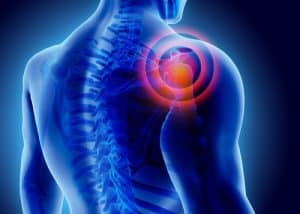What’s your pain threshold?
May 6, 2019

You pain threshold is a very personal thing, and no one should make light of what other people experience even though their pain threshold and pain tolerance may be different.
Difference between pain threshold & pain tolerance
Pain threshold refers to the lowest intensity at which a given stimulus is perceived as painful, and it is relatively constant across individuals for a given stimulus. Pain tolerance is the greatest level of pain that a subject is able to endure and varies much more widely across subjects. Clinically speaking, pain tolerance is more importance than pain threshold, and can potentially be controlled more.
Women & pain threshold
A 2002 study showed a difference in women’s and men’s pain thresholds. According to one of the researchers in the study, William Maixner, PhD, DDS, director of the Center for Neurosensory Disorders at the University of North Carolina, when the body is injured, it releases pain-relieving substances, including beta endorphins, which are a natural opioid. This is also known to be a natural painkiller.
But many women’s bodies release fewer beta endorphins than men’s bodies release. Fewer natural painkillers can mean more pain for women who suffer from the same injury or condition.
Improving your pain threshold
You can’t control your gender or your genes — two big factors that determine pain threshold. But you can control your stress level in some instances. Pain thresholds can fluctuate, and we know that stress and pain go together. Researchers have found that life events, such as the death of a close friend or family member or job loss, can increase sensitivity to pain.
But it’s also important to recognize that when you have a heightened sensitivity to the daily bumps and bruises of life with a low pain threshold, that can make you more stressed out, thus causing pain to worsen. It can be a never ending cycle of stress and pain.
There are a few things you can do to reduce stress, especially if you know that your pain threshold is low. Here are just a few strategies:
- Talk to your doctor. Let your doctors and other medical professionals know ahead of time that you’re highly sensitive to pain. We want to know this information, and it can help us take extra measures during procedures to alleviate pain as much as possible and provide appropriate relief afterward.
- Try your best to relax. Deep breathing can reduce the production of epinephrine, a chemical that increases sensitivity to pain. Identify things you can do to help you stay calm — maybe it’s listening to a certain type of music, meditation, or yoga before going to an appointment.
- Keep a pain journal. A pain journal is the place where you can document everything related to your pain, including information about your pain threshold. This can be very helpful to you and your doctor in looking at trends and triggers for pain.
- Seek help from mental health professionals. Cognitive behavioral therapy can help you learn coping skills that may be beneficial if you have a very low pain threshold but are dealing with heightened pain in your life.
Southside Pain Specialists is your one-stop shop for pain management
With a multitude of pain relief options tailored to your specific needs, Southside Pain Specialists follow the standards of the American Society of Interventional Pain Physicians, The American Board of Pain Medicine and the International Spinal Injection Society and works hard to provide patients comprehensive, caring pain relief when they need it most. Check out our website or contact us today at 205.332.3155 to learn more.
